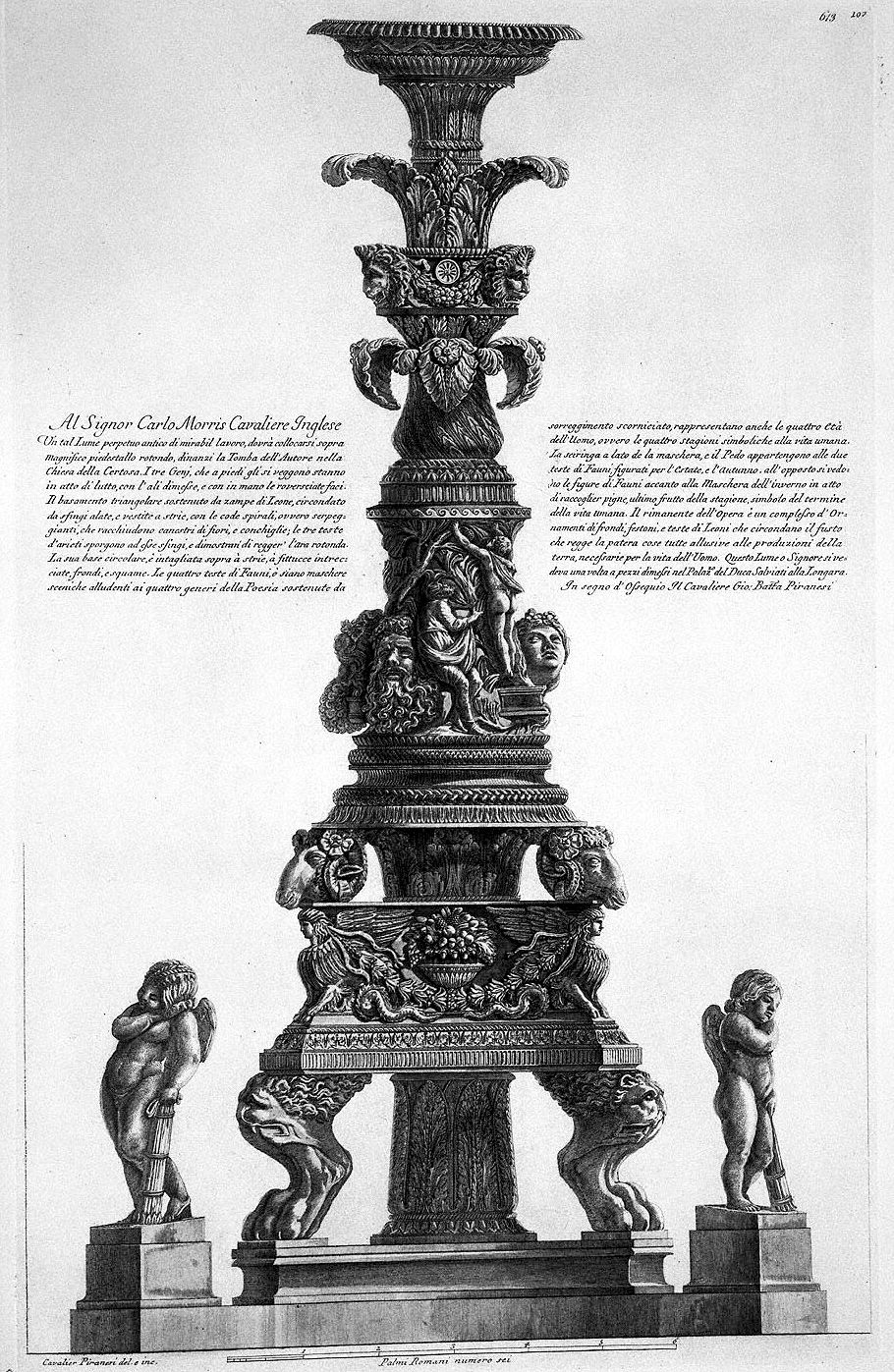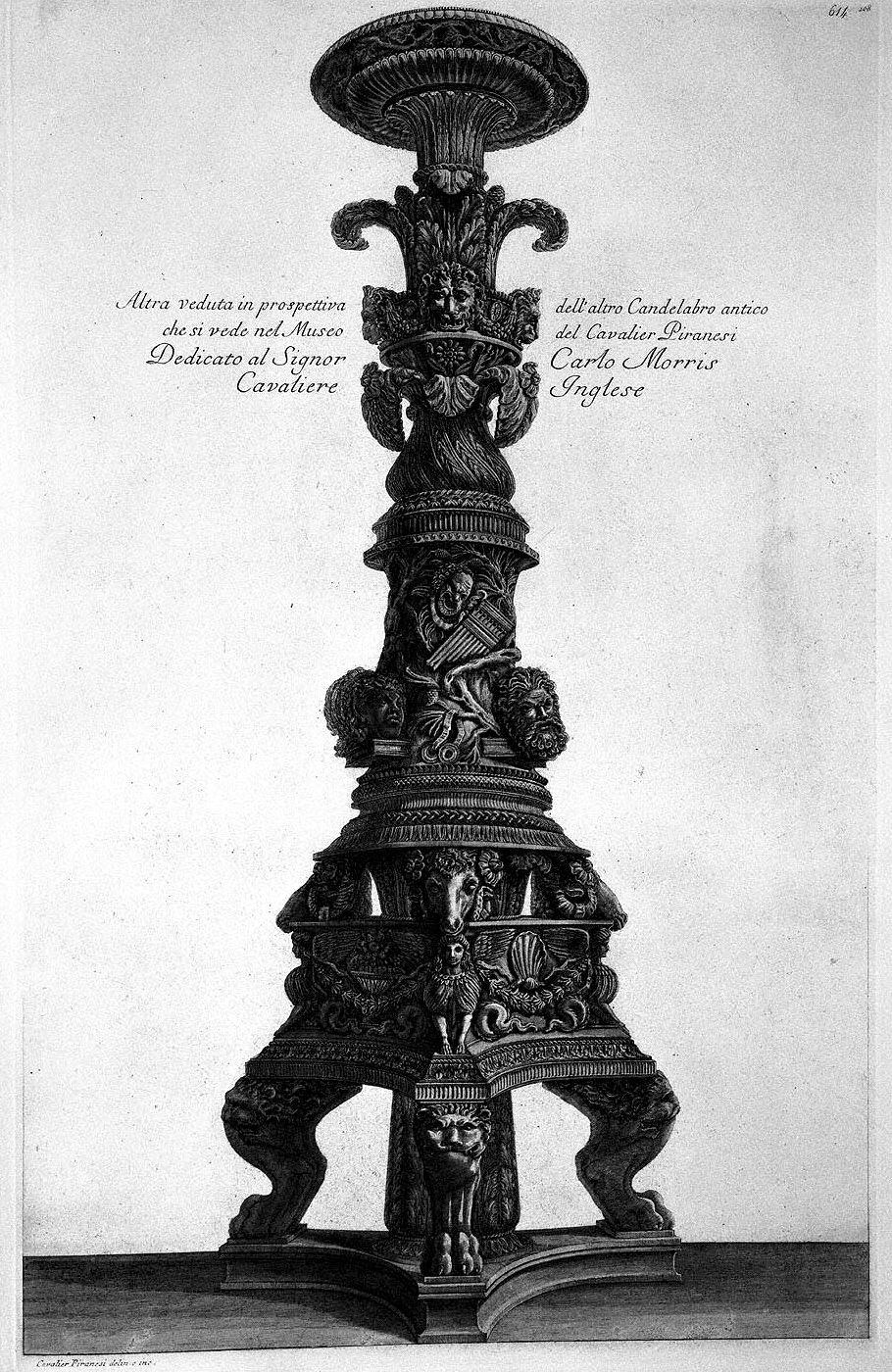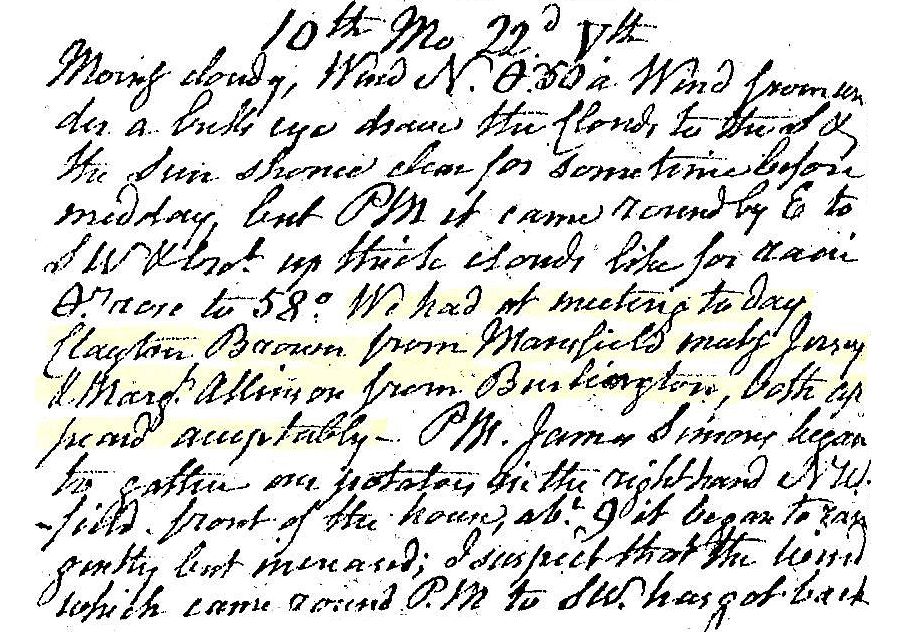22 October 1778 Thursday

To Mr. Carlo Morris English Knight
Such an ancient perpetual lamp of marvelous work must be placed on a magnificent round pedestal, in front of the Tomb of the Author in the Church of the Certosa. The three Genj, who can be seen on foot, are in an act of mourning, with their wings discharged, and with the ruffled faci in their hands. The triangular base supported by lion's paws, surrounded by winged sphinxes, and dressed in striae, with spiral tails, or meandering, which enclose baskets of flowers and shells; the three heads of rams protrude from them sphinxes, and demonstrate to support the round altar. Its circular base is carved on striae, intertwined tapes, fronds, and scales. The four heads of Fauns, or are stage masks alluding to the four genres of Poetry supported by framed support, also represent the four Ages of Man, or the four symbolic seasons to human life. The syringe beside the mask, and the Pedo belong to the two heads of Fauns, figured for Summer and Autumn. on the contrary, the figures of Fauns are seen next to the Winter Mask in the act of collecting pine cones, the last fruit of the season, symbol of the end of human life. The remainder of the Opera is a complex of ornaments of foliage, festoons, and Lions' heads that surround the stem that holds the patera, all alluding to the productions of the earth, necessary for the life of man. This Lume or Lord was once seen in pieces dismissed in the Palazzo del Duca Salviati alla Longara.
As a sign of respect Il Cavaliere Giovanni Battista Piranesi

Another perspective view of the other ancient candelabrum that can be seen in the Museum of Cavalier Piranesi
Dedicated to Mr. Carlo Morris English Knight
22 October 1812 Thursday

Morning cloudy. ... We had at Meeting today Clayton Brown from Mansfield Meeting Jersey and Margaret Allison from Burlington. Both appeared acceptably. PM James Simon began to gather our potatoes in the right hand NW field, front of the house. About 9 it began to rain gently but increased. I suspect that the wind which came run PM had got back.
22 October 2008
Interesting ADA / Universal Design / Accessibility solutions
What [is] reenactment but the rituals of nostalgia? Ah, like the custom of the groom carrying the bride over the threshold reenacts the rape of the Sabine women. It says so right in Livy's Romulus.
22 October 2022 Saturday
Looking ahead a few days, I see that Seroux d'Agincourt left Paris, never to see it again, on 24 October 1778. Then, thinking to myself, "I wonder if Jean-Baptiste-Louis-George Seroux d'Agincourt and Francesco Piranesi crossed paths or even knew each other in Rome." A Seroux d'Agincourt "Francesco Piranesi" google search request returned links to a plethora of new information, especially pertaining to Francesco. For example:
An Eighteenth-Century Artist's Funeral at the Protestant Cemetery in Rome by Christina Huemer
which ends with...
Francesco's proposed commemorative stone for Åkerström was modeled on the earlier monument and accompanied by a letter that makes his intentions clear: "I enclose the inscription," he wrote to Reuterholm (with a copy to Fredenheim),
"that was copied and distributed at the time of the funeral, that I will have incised at my expense on an ancient column, as my Father did for a friend of his. Please let me know as soon as possible if there is anything you want changed in the Inscription, as well as the name[s] of his [Åkerström's] Benefactors, so that I can have them incised. My brother and Bassi have taken great care to see that all this goes well, and in good order ..."
Perhaps Francesco never received an answer to this request, or perhaps he regretted offering to assume the expenses himself, but the column was never
erected, and Åkerström's precise resting place in what is now known as the "Parte Antica" of the Cemetery remains unknown. By the end of 1796 the
political climate in Sweden had changed, as Gustav IV reached his majority, there was a political shakeup and Gustav Adolf Reuterholm fell out of favor.
Soon Francesco Piranesi's fortunes changed as well: he lost his post as Sweden's representative in 1798. He and his brother Pietro, proponents of the Roman Republic of 1799, fled to Paris after its fall. Francesco Piranesi never achieved the success and esteem in Paris that he had enjoyed in Rome, and he died in poverty in 1810. His final resting place, like Akerstrom's, is an unmarked grave.*
* It is not even known in which Paris cemetery he is buried. Cf. Caira Lumetti, cit., p. 235.
and:
La pianta della Certosa e la pianta di Francesco Piranesi by Giuseppina Enrica Cinque
and it.frwiki.wiki/wiki/Francesco_Piranesi, which contains much information including:
In February 1798, Francesco Piranesi sided with the Roman Republic, this sister Republic of France: he was successively director of the police and commissioner for the administration of finances.
After "the capitulation that delivers Rome to the Anglo-Neapolitans, Francesco and Pietro, forced to flee, land in Marseilles. "They saved with all their luck only the plates engraved by their father", observes the November 1799 edition of The Philosophical Decade, while sensing that "the Piranesi will hasten to publish this interesting collection again, as soon as they arrive in Paris."
The Philosophical Decade, in its edition of December 26, 1799, announces the arrival of the Piranesi brothers in Paris, adding "who had the good fortune to save from the hands of the English and to bring to France the plates of their father's work." The same publication specifies the following, April 29, 1800. that it was the commissioner of war Walville who transported the Piranesi Chalcography from Rome to Marseille declaring himself buyer and owner to obtain authorization to embark, then transmitted by Louis-Alexandre Berthier, Minister of War for transport from Marseille to Paris. Reacting to the desire expressed by Talleyrand to see "everything done to ensure the preservation of a precious establishment," Lucien Bonaparte, Minister of the Interior, provides Francesco and Pietro "an adequate room" (the machine depot) of rue de l'Université adding "all kinds of resources for carrying out their activity."
All the new Francesco information needs to be absorbed and assimilated. And Minor's fabrications--how many are there now? Knowing Francesco's life story after Piranesi's death is important because I'm trying to truthfully portray the young man's life here in the month's before his father's death.
|